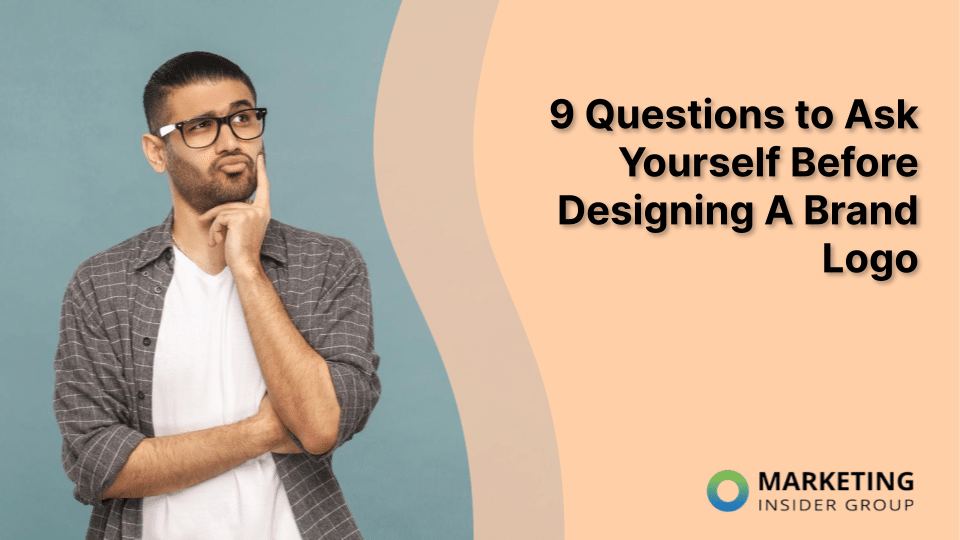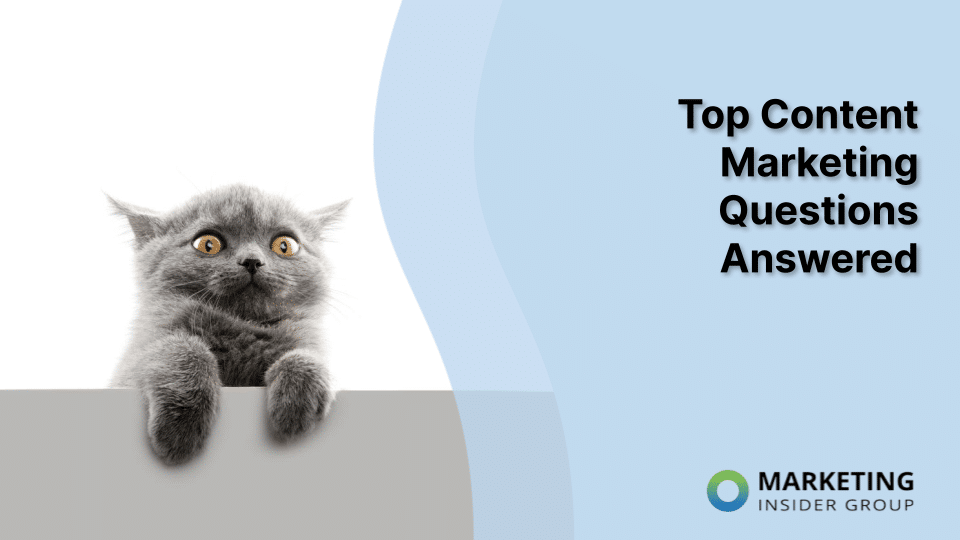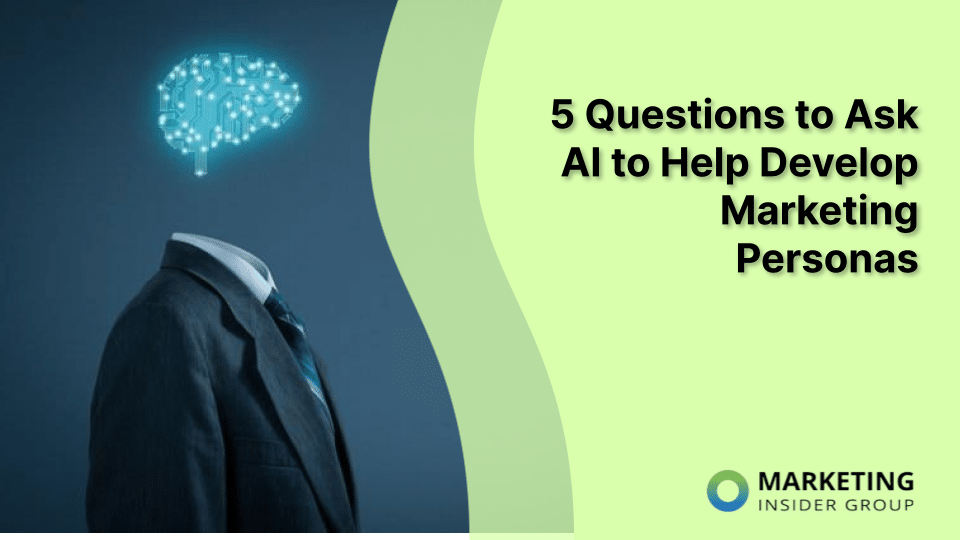
5 Questions to Ask AI to Help Develop Marketing Personas
Learning about your audience to connect with them effectively requires extensive research. While interviews are a great way to gain insight into your target audience, they can be extremely time-consuming. Additionally, it can be difficult to get interviewees to open up and deliver the information you’re searching for.
With the help of AI, you can gain powerful insights about your marketing segments to help cater your website strategy to your audience. AI is a readily available tool that you can access whenever you want to obtain new information about your audience. As a result, you’ll save your team time and resources that can be dedicated to actually implementing your website design strategy and creating marketing materials.
But note that AI is still just a tool. While it’s great for research, we still recommend validating any information that comes out of your AI tool with your team, your own data, and your users.
In order to use AI effectively, you need to ask specific questions that address your needs. To get you started with using AI to develop marketing personas, we’ve created a list of five questions to ask with real ChatGPT input and output examples. That way, you can harness the true marketing potential of AI. Let’s get started!
1. Can you build a marketing persona with the following attributes?
Marketing personas are fleshed-out profiles of specific segments of your target audience. While you may have a solid understanding of your audience as a whole, it’s important to know the differences between various customers in order to cater to each of their needs.
A well-rounded marketing persona will contain the customer’s goals, challenges, preferences, and demographics. While it’s important to connect with actual customers to learn more about them, AI can produce a quick overview of a marketing persona that may help close gaps in your research.
Let’s walk through an example of how to ask ChatGPT for a marketing persona. In this case, we’ll be acting as a niche business that creates furniture out of recycled materials. Remember that the more specific you are in your prompts, the better ChatGPT’s responses will be.
Here’s an example of a prompt for creating a marketing persona:
Can you build a marketing persona for someone looking to buy furniture made out of recycled materials? Please include details about this person’s goals, pain points, and decision criteria for purchasing furniture.
Take a look at ChatGPT’s response:


While this persona is a great starting point, make sure to incorporate feedback from real customers to make sure you’re accurately identifying and serving their needs. That way, you can verify ChatGPT’s response and make changes as needed.
2. How would this person describe their challenges in their own terms?
When you’re reaching out to potential customers, you want to meet them where they are. Incorporating the language your target audience uses in your communications is effective because it shows you understand the consumer and are willing to adapt to reach them more easily. As a result, you’ll more successfully convert leads into customers.
Check out this example of a prompt for defining the language of your target audience:
How would the eco-conscious buyer describe their challenges in their own words?
Here’s ChatGPT’s response:

While you may be tempted to use industry jargon in your communications, your audience may not be familiar with those terms. Asking ChatGPT how a particular persona would describe their challenges in their own terms can help gather a quick understanding of the language you should be using.
Understanding each persona’s challenges can also help you determine the types of calls to action to include throughout your website. Calls to action that answer your audience’s questions or solve their problems are much more likely to be clicked.
3. What resources does this person use to get their information?
Learning where your target audience gets their information has several major benefits. For one, knowing which resources your persona accesses allows you to explore those resources for yourself to dive deeper into the customers’ interests and needs. For example, if your target audience listens to a certain podcast in their industry, then it may be valuable for your team to check out an episode or two to glean insights about your audience.
Additionally, understanding which types of resources your audience looks for can help you to develop content in a format they’ll actually consume. For instance, if you’re a healthcare organization, and your marketing persona reads articles on an industry-relevant blog, consider revamping your healthcare website’s blog to emulate other industry resources.
Lastly, asking ChatGPT where your audience would look to get information on your product or service specifically would allow you to ensure that you’re making it as easy as possible for your marketing persona to find your company.
Let’s take a look at an example prompt for discovering which resources your marketing persona uses to seek out a company like yours:
What resources would the eco-conscious buyer use before purchasing furniture?
Here’s ChatGPT’s response:

Using ChatGPT’s response as a checklist allows you to verify that you’re using as many communication channels as possible to reach potential customers.
4. What prompted this person to seek help?
Identifying the root of your target audience’s problem can help you offer appropriate solutions. When you understand exactly what triggered someone to seek out your business, you can make your marketing materials more focused.
For example, a website design company may offer many different services. Knowing that a certain marketing persona needs help with user experience as opposed to content strategy will allow you to more effectively address that segment’s needs and increase conversions.
Here’s how you might ask ChatGPT what prompted your marketing persona to seek help:
What are some reasons that made the eco-conscious buyer look for furniture made out of recycled materials?
Check out ChatGPT’s response:
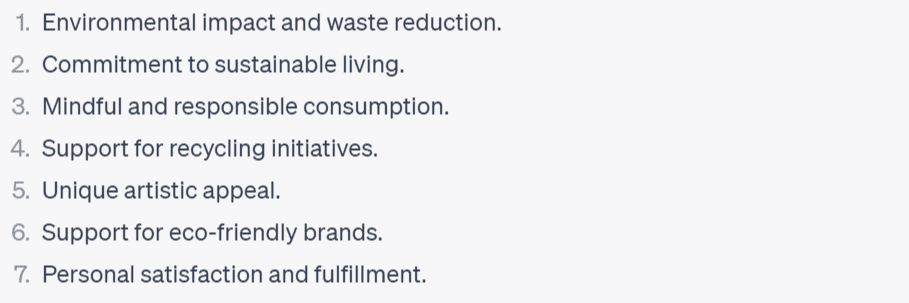
While a disadvantage of AI may be that it’s not capturing the thoughts of real people, you can present ChatGPT’s list of reasons for seeking help to actual people in your target audience to see if they agree with the response. Then, you can adjust the list accordingly.
5. What information would help move this person down the sales funnel?
Kanopi recommends developing a website content strategy that considers every touchpoint in the conversion process. As a result, you can rest assured that you’re providing enough information for someone to decide whether they’d like to purchase your product or service.
Find out what information to include in marketing materials to increase conversions using a prompt like this:
What information would the eco-conscious buyer need about a furniture company to help them decide to make a purchase?
Here’s ChatGPT’s response:
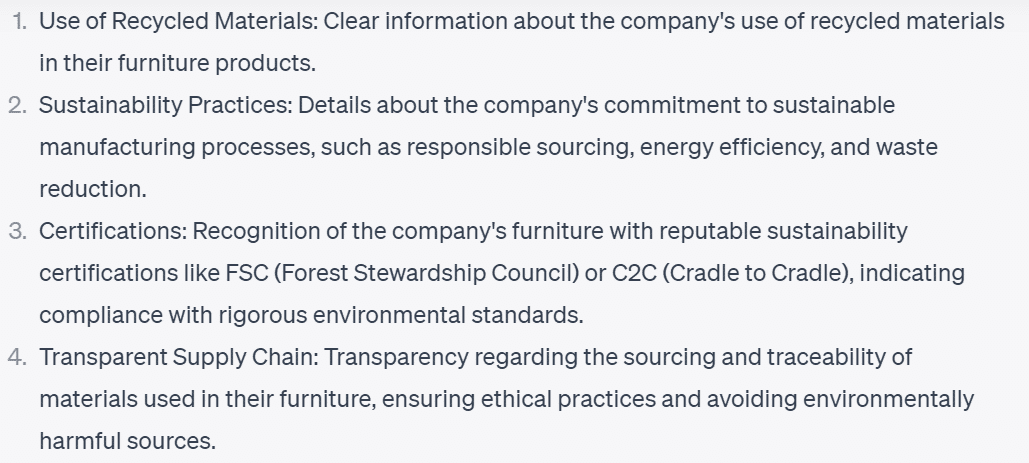

Diving into the decision-making process of your target audience gives you an advantage over your competitors and indicates which of your strengths to emphasize in your web content.
AI shouldn’t replace your typical marketing plan, but it can help you refine your existing website marketing strategy. Using this tool will save you time and allow you to gain insight into your target audience that you may not have found through traditional methods. As a result, you can better understand your customers and attend to their needs more effectively.

